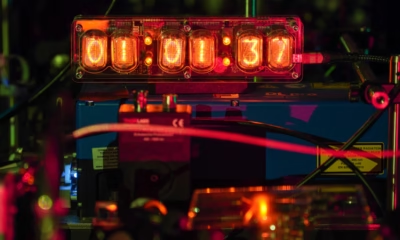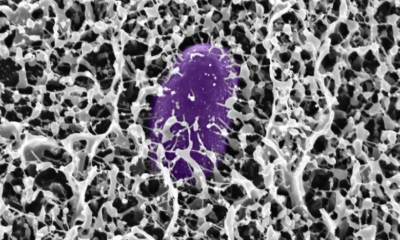Space & Physics
Superconducting Saga: What happened to LK-99?
The community of condensed matter physicists was put under spotlight in the wake of a paper, triggering a frenzy like none other in recent times.

In July 2023, two South Korean experimental physicists, Lee Sukbae and Kim Ji-Hoon published a pre-print in arXiv, claiming discovery of superconductivity in a sample, occurring at room temperature.
The condensed matter physics community was put under spotlight in the wake of this paper, triggering a frenzy like none other in recent times.
The material dubbed, LK-99, after the initials of the South Korean physicists, promised nothing short of a revolution to the electronics industry.
But before I go further, let’s go through some superconductivity basics.
What are superconductors?
Basically, superconductivity is a macroscopic quantum phenomenon. Our story begins with two ground-breaking experiments.
In 1911, the Dutch physicist, Heike Onnes observed that a mercury wire dipped in liquid helium, offered zero resistance to the passage of electricity, when the temperature of the mercury was lowered to-269◦ C.
In 1937, Pyotr Kapitsa, John F. Allen and Don Misener discovered that at an even lower temperature close to -273◦ C, liquid helium-4 transformed into a superfluid. A superfluid’s an exotic fluid exhibiting zero viscosity.
Both these exotic phenomena of superfluidity and superconductivity are closely linked, though they’re not the same.

However, this effect would go for years without a solid theory, until the physicists’ trio, John Bardeen, Leon Cooper and John Schrieffer, put together a ‘complete’ microscopic theory, known as the ‘BCS theory’. The theory makes a number of quantitative predictions about the behavior of superconductors. Most importantly, it shows how pairs of electrons would couple to form Cooper pairs, overcoming mutual repulsion below a set critical temperature. Bardeen, Cooper and Schrieffer would go on to win the 1972’s Nobel Prize in Physics for this work.
As much as superconductors revolutionized the electronics industry in the 20th century, the temperatures at which this effect is commonly seen is in the same regime as outer space. It takes resources for laboratories to reach these temperatures. But imagine if nature showed us a material that can become a superconductor at room temperature …
The case for ‘room temperature’ superconductors
But you may be wondering what’s the big deal with room temperature superconductors anyway? For one, they’re promising an overnight revolution of sorts in the electronics industry. The approximately 7% loss of energy there is to pass currents through wires during transportation, can be brought down to near zero with room temperature superconductors. Another important use of these superconductors would be in the development of strong magnetic fields. Strong stable magnetic fields are used in MRI imaging and maglev trains.

Source: Ramon Salinero / Unsplash
This could make such technologies more accessible and cheaper to the public. Renewable energy generation from solar and wind power could see their efficiency rise with the help of room-temperature superconductors. The use of room-temperature superconductors could grow exponentially more after its discovery, even in applications we do not know yet. Think of the world today without any semiconductors, it would be tough to live without our LED lamps or solar panels. Similarly, room temperature superconductors could inexorably revolutionize our way of living for the better. I mean, who knows? Nobody knows! It’s yet to be invented.
Sukbae and Kim claimed that LK-99 displayed superconductivity when the temperature dropped below 127◦ C. They claimed to have observed zero resistance currents.
And that was all it took for social media savvy tech entrepreneurs to embark on a hype train, and spread the word on room temperature superconductors potentially being real at last. Except it’s not technically room temperature – for 127◦ C is way past the boiling point of water. But it’s much easier for laboratories to set up an experiment, investigate and replicate 127◦ C.
The dream fever isn’t abating away, but the proof really is in the pudding.
There’s nothing to say room temperature superconductors can’t exist. In fact, scientists who worked in producing these results have also shared this opinion in their work.
Conventional superconductivity – with extreme cold critical temperatures – was challenged back in 1986, when certain cuprate compounds such as yttirium barium copper oxide (or YBCO) were discovered. They have a higher critical temperature of -183◦ C, which is still very cold, but still warmer compared to helium-4. Such critical temperatures are outside the realm of the standard BCS theory, with the main mechanisms underpinning them being a topic of research.
The race for verification
After their paper was submitted in arXiv, Sukbae and Kim released a video of the levitating LK-99 sample on a magnet – a hallmark signature of the Meissner effect. The Meissner effect is a prediction of the standard BCS theory – when magnetic field lines are ousted from within the material itself.
They provided a detailed description of how LK-99 can be synthesised. This led materials labs from across the world to descend into a frenzy to try and replicate their results.
Some of the earliest research were done at the National Physics Laboratory (NPL) in New Delhi and Beihang University in Beijing (BU).
A team from the Southeast University in Nanjing, observed a near-zero resistance in LK-99 at -163 ◦ C. The team from Nanjing used an X-ray diffraction technique consistent with the work that the Korean scientists had published.
And then the theorists entered the fray. Sinead Griffin from the Lawrence Berkeley National Laboratory, US, performed calculations to suggest there really were telltale signs of room temperature super conductance in LK-99. Specifically, possible mechanisms for forming Cooper pairs were identified.
While these results were tantalising, they did not give conclusive evidence of superconductivity.
The Meissner effect – or what the South Koreans claimed was the Meissner effect- couldn’t be replicated in any other studies.
Griffin attained social media popularity after her tweets with over 14K followers on X. However, truth be told – Griffith wasn’t explicitly backing anybody – but was merely giving the South Koreans’ work a fair shot.
The last twist in the saga came when she said, “My paper did *not* prove nor give evidence of superconductivity”.
Realization dawns
And suddenly, it wasn’t going in LK-99’s favour at all. It turned out the research team at Southeast University in Nanjing, had made incorrect measurements using faulty instrumentation, meaning they were unreliable.
Whereas, the studies from India’s National Physical Laboratory (NPL) and Beihang University didn’t find report any superconductivity effect. In fact, it just seemed like dull, grey metal.
But the final series of nails in the coffin were the conclusive results by Yuan Li at Peking Institute, and Yi Jiang at the Donostia International Physics Centre, Spain. They proved beyond doubt that LK-99, as synthesised by the South Korean team, was a ferromagnet. Yuan Li also explained the levitating video of LK-99 pellets over a magnet was a result of ferromagnetism. He also showed the absence of superconducting current at low temperatures.

A ferrofluid exhibiting ferromagnetic properties; Source: Etienne Desclides / Unsplash
Science is often rife with controversies and debatable results. Many physicists have published unconfirmed, and published plagiarized work. Some notable examples include the alleged groundbreaking work of Jan Schön, who claimed discovery of organic transistors. Only to be charged with fraud after he made up his results, thus bringing him disrepute that brought an end to his scientific career pretty early on.
Then there was the work by Anshu Pandey and Dev Thapa on similar claims of room temperature superconductors that weren’t replicated.
Although it’s unfortunate that this saga ended so disappointingly with LK-99, I am not, in any manner suggestive of the fact that room-temperature superconductivity cannot exist.
Scientists who worked in producing these results have also shared this opinion in their work. Many scientists have however also shared the need to understand the results and related nitty gritty, before jumping the gun.
However, the collaboration amongst scientists at universities across the world, was focused on uncovering LK-99’s true properties.
It wasn’t just mere claims, backed by data, but also the peer-review process that helped redefine public discourse, and set the facts straight. And that had made all the difference.
Space & Physics
Physicists Double Precision of Optical Atomic Clocks with New Laser Technique
MIT researchers develop a quantum-enhanced method that doubles the precision and stability of optical atomic clocks, paving the way for portable, ultra-accurate timekeeping.
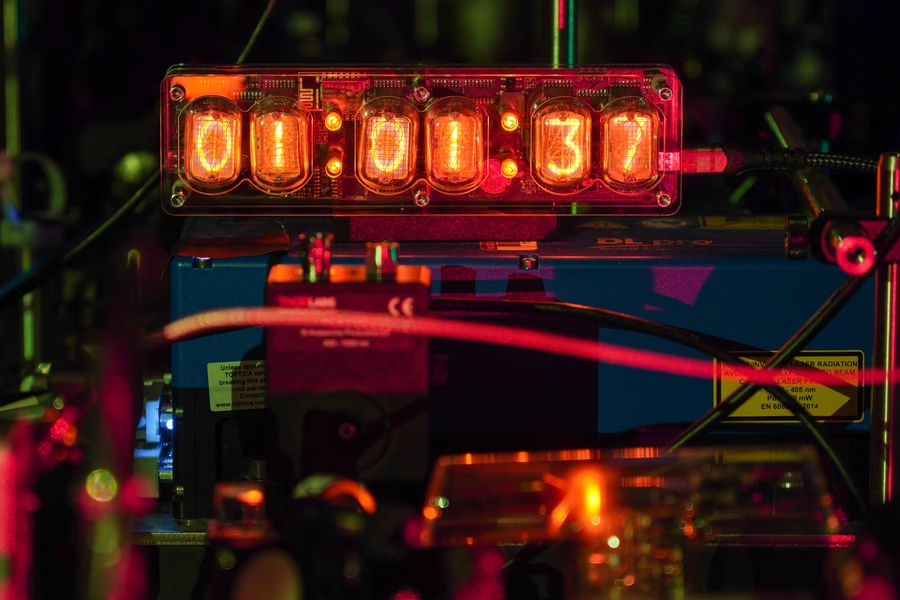
MIT physicists have unveiled a new technique that could significantly improve the precision and stability of next-generation optical atomic clocks, devices that underpin everything from mobile transactions to navigation apps. In a recent media statement, the MIT team explained: “Every time you check the time on your phone, make an online transaction, or use a navigation app, you are depending on the precision of atomic clocks. An atomic clock keeps time by relying on the ‘ticks’ of atoms as they naturally oscillate at rock-steady frequencies.”
Current atomic clocks rely on cesium atoms tracked with lasers at microwave frequencies, but scientists are advancing to clocks based on faster-ticking atoms like ytterbium, which can be tracked with lasers at higher, optical frequencies and discern intervals up to 100 trillion times per second.
A research group at MIT, led by Vladan Vuletić, the Lester Wolfe Professor of Physics, detailed that their newly developed method harnesses a laser-induced “global phase” in ytterbium atoms and boosts this effect using quantum amplification. Vuletić stated, “We think our method can help make these clocks transportable and deployable to where they’re needed.” The approach, called global phase spectroscopy, doubles the precision of an optical atomic clock, enabling it to resolve twice as many ticks per second compared to standard setups, and promises further gains with increasing atom counts.
The technique could pave the way for portable optical atomic clocks able to measure all manner of phenomena in various locations. Vuletić summarized the broader scientific ambitions: “With these clocks, people are trying to detect dark matter and dark energy, and test whether there really are just four fundamental forces, and even to see if these clocks can predict earthquakes.”
The MIT team has previously demonstrated improved clock precision by quantumly entangling hundreds of ytterbium atoms and using time reversal tricks to amplify their signals. Their latest advance applies these methods to much faster optical frequencies, where stabilizing the clock laser has always been a major challenge. “When you have atoms that tick 100 trillion times per second, that’s 10,000 times faster than the frequency of microwaves,” said Vuletić in the statement. Their experiments revealed a surprisingly useful “global phase” information about the laser frequency, previously thought irrelevant, unlocking the potential for even greater accuracy.
The research, led by Vuletić and joined by Leon Zaporski, Qi Liu, Gustavo Velez, Matthew Radzihovsky, Zeyang Li, Simone Colombo, and Edwin Pedrozo-Peñafiel of the MIT-Harvard Center for Ultracold Atoms, was published in Nature. They believe the technical benefits of the new method will make atomic clocks easier to run and enable stable, transportable clocks fit for future scientific exploration, including earthquake prediction, fundamental physics, and global time standards.
Space & Physics
Nobel Prize in Physics: Clarke, Devoret, and Martinis Honoured for Pioneering Quantum Discoveries
The 2025 Nobel Prize in Physics honours John Clarke, Michel H. Devoret, and John M. Martinis for revealing how entire electrical circuits can display quantum behaviour — a discovery that paved the way for modern quantum computing.
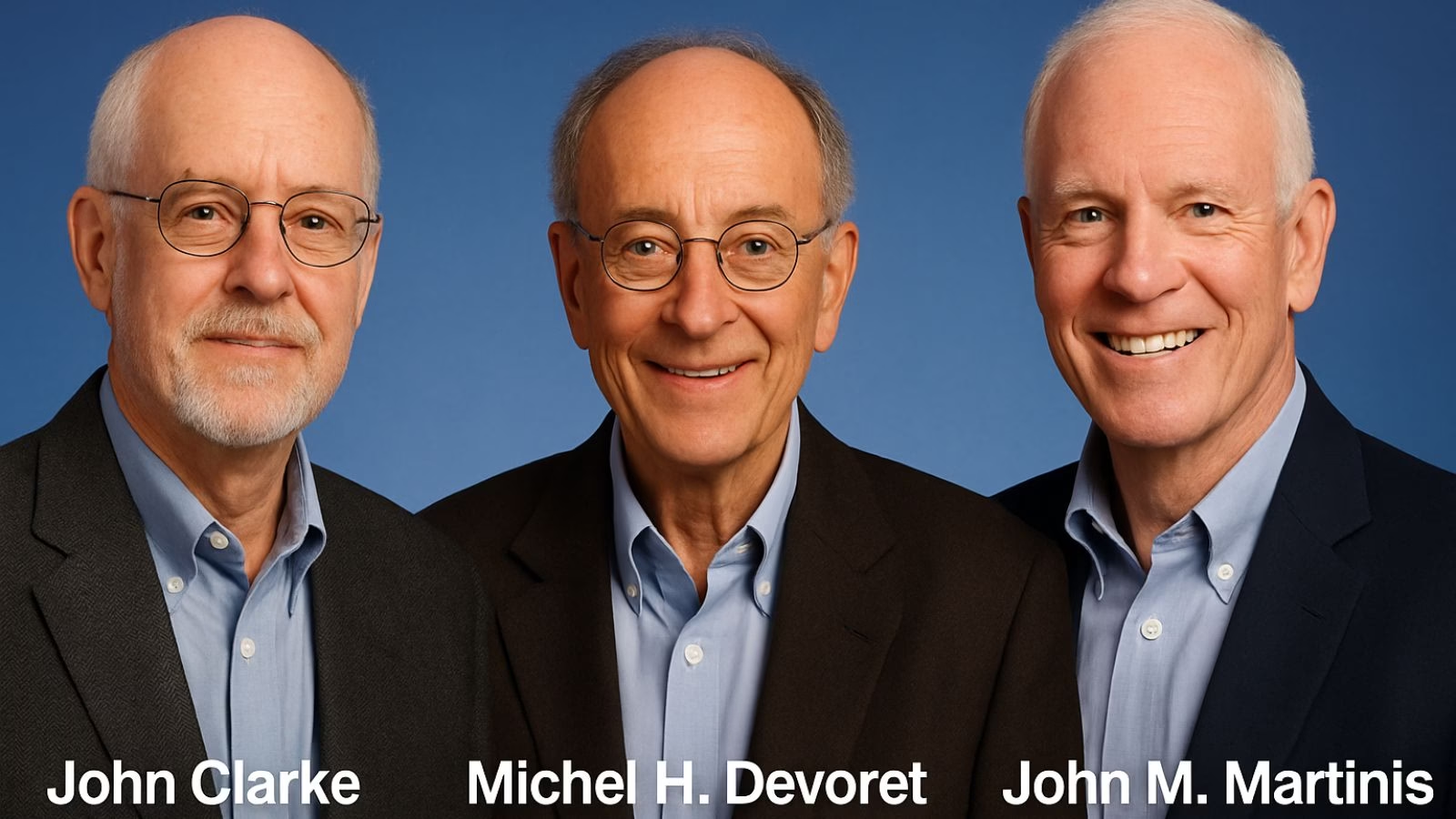
The 2025 Nobel Prize in Physics has been awarded to John Clarke, Michel H. Devoret, and John M. Martinis for their landmark discovery of macroscopic quantum mechanical tunnelling and energy quantisation in an electric circuit, an innovation that laid the foundation for today’s quantum computing revolution.
Announcing the prize, Olle Eriksson, Chair of the Nobel Committee for Physics, said, “It is wonderful to be able to celebrate the way that century-old quantum mechanics continually offers new surprises. It is also enormously useful, as quantum mechanics is the foundation of all digital technology.”
The Committee described their discovery as a “turning point in understanding how quantum mechanics manifests at the macroscopic scale,” bridging the gap between classical electronics and quantum physics.
John Clarke: The SQUID Pioneer
British-born John Clarke, Professor Emeritus at the University of California, Berkeley, is celebrated for his pioneering work on Superconducting Quantum Interference Devices (SQUIDs) — ultra-sensitive detectors of magnetic flux. His career has been marked by contributions that span superconductivity, quantum amplifiers, and precision measurements.
Clarke’s experiments in the early 1980s provided the first clear evidence of quantum behaviour in electrical circuits — showing that entire electrical systems, not just atoms or photons, can obey the strange laws of quantum mechanics.
A Fellow of the Royal Society, Clarke has been honoured with numerous awards including the Comstock Prize (1999) and the Hughes Medal (2004).
Michel H. Devoret: Architect of Quantum Circuits
French physicist Michel H. Devoret, now the Frederick W. Beinecke Professor Emeritus of Applied Physics at Yale University, has been one of the intellectual architects of quantronics — the study of quantum phenomena in electrical circuits.
After earning his PhD at the University of Paris-Sud and completing a postdoctoral fellowship under Clarke at Berkeley, Devoret helped establish the field of circuit quantum electrodynamics (cQED), which underpins the design of modern superconducting qubits.
His group’s innovations — from the single-electron pump to the fluxonium qubit — have set performance benchmarks in quantum coherence and control. Devoret is also a recipient of the Fritz London Memorial Prize (2014) and the John Stewart Bell Prize, and is a member of the French Academy of Sciences.
John M. Martinis: Building the Quantum Processor
American physicist John M. Martinis, who completed his PhD at UC Berkeley under Clarke’s supervision, translated these quantum principles into the hardware era. His experiments demonstrated energy level quantisation in Josephson junctions, one of the key results now honoured by the Nobel Committee.
Martinis later led Google’s Quantum AI lab, where his team in 2019 achieved the world’s first demonstration of quantum supremacy — showing a superconducting processor outperforming the fastest classical supercomputer on a specific task.
A former professor at UC Santa Barbara, Martinis continues to be a leading voice in quantum computing research and technology development.
A Legacy of Quantum Insight
Together, the trio’s discovery, once seen as a niche curiosity in superconducting circuits, has become the cornerstone of the global quantum revolution. Their experiments proved that macroscopic electrical systems can display quantised energy states and tunnel between them, much like subatomic particles.
Their work, as the Nobel citation puts it, “opened a new window into the quantum behaviour of engineered systems, enabling technologies that are redefining computation, communication, and sensing.”
Space & Physics
The Tiny Grip That Could Reshape Medicine: India’s Dual-Trap Optical Tweezer
Indian scientists build new optical tweezer module—set to transform single-molecule research and medical Innovation
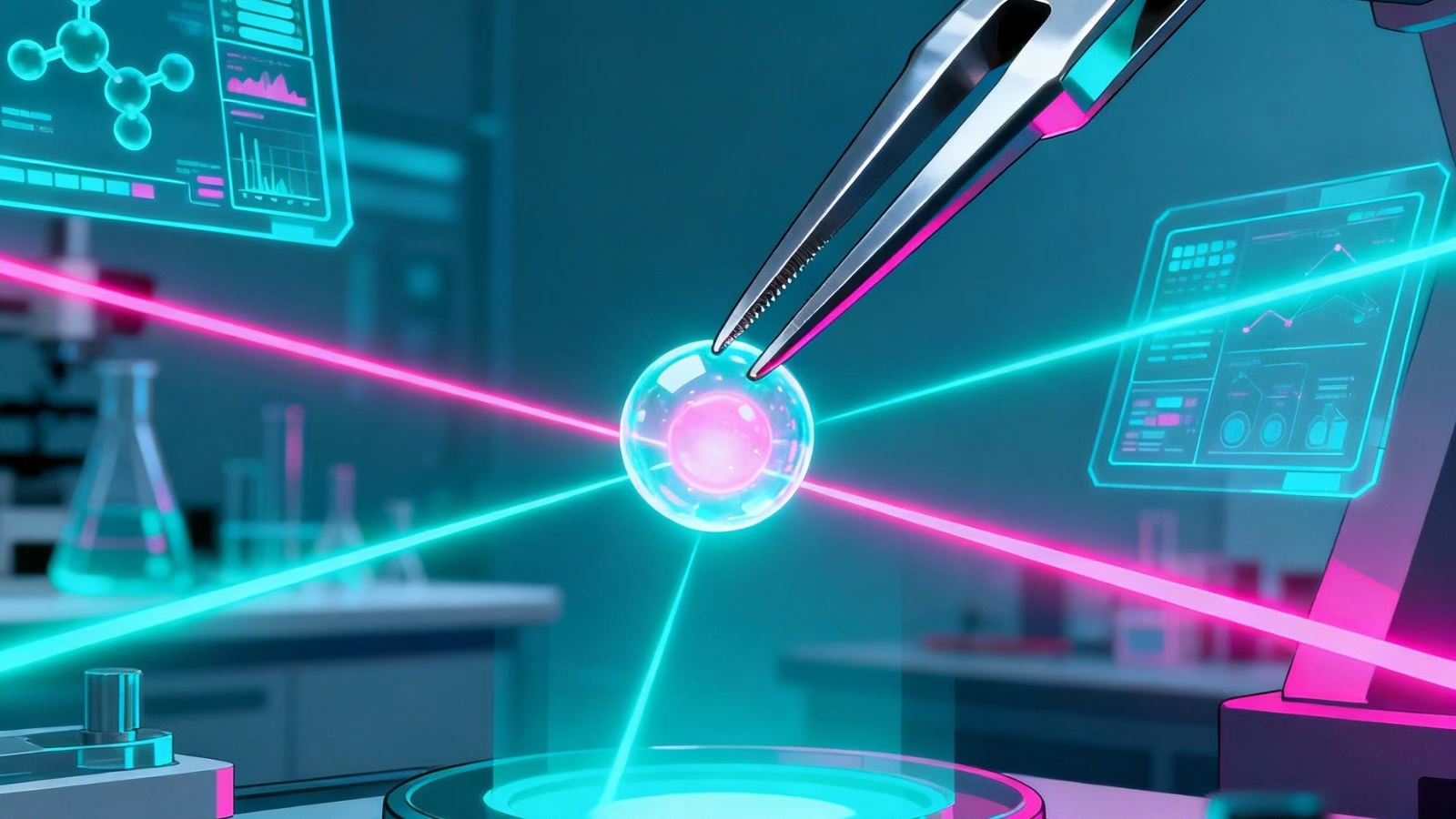
In an inventive leap that could open up new frontiers in neuroscience, drug development, and medical research, scientists in India have designed their own version of a precision laboratory tool known as the dual-trap optical tweezers system. By creating a homegrown solution to manipulate and measure forces on single molecules, the team brings world-class technology within reach of Indian researchers—potentially igniting a wave of scientific discoveries.
Optical tweezers, a Nobel Prize-winning invention from 2018, use focused beams of light to grab and move microscopic objects with extraordinary accuracy. The technique has become indispensable for measuring tiny forces and exploring the mechanics of DNA, proteins, living cells, and engineered nanomaterials. Yet, decades after their invention, conventional optical tweezers systems sometimes fall short for today’s most challenging experiments.
Researchers at the Raman Research Institute (RRI), an autonomous institute backed by India’s Department of Science and Technology in Bengaluru, have now introduced a smart upgrade that addresses long-standing pitfalls of dual-trap tweezers. Traditional setups rely on measuring the light that passes through particles trapped in two separate beams—a method prone to signal “cross-talk.” This makes simultaneous, independent measurement difficult, diminishing both accuracy and versatility.
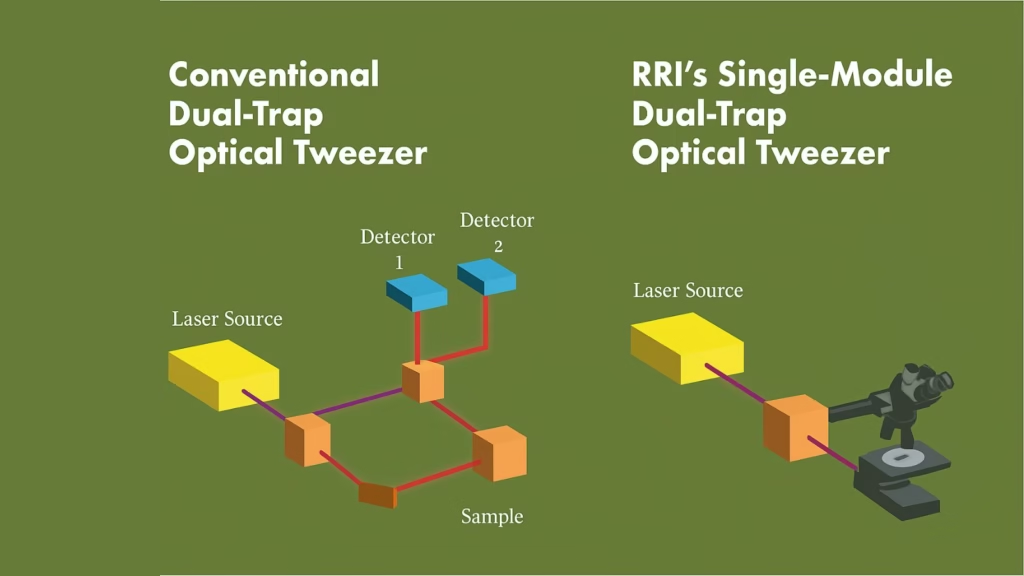
The new system pioneers a confocal detection scheme. In a media statement, Md Arsalan Ashraf, a doctoral scholar at RRI, explained, “The unique optical trapping scheme utilizes laser light scattered back by the sample for detecting trapped particle position. This technique pushes past some of the long-standing constraints of dual-trap configurations and removes signal interference. The single-module design integrates effortlessly with standard microscopy frameworks,” he said.
The refinement doesn’t end there. The system ensures that detectors tracking tiny particles remain perfectly aligned, even when the optical traps themselves move. The result: two stable, reliable measurement channels, zero interference, and no need for complicated re-adjustment mid-experiment—a frequent headache with older systems.
Traditional dual-trap designs have required costly and complex add-ons, sometimes even hijacking the features of laboratory microscopes and making additional techniques, such as phase contrast or fluorescence imaging, hard to use. “This new single-module trapping and detection design makes high-precision force measurement studies of single molecules, probing of soft materials including biological samples, and micromanipulation of biological samples like cells much more convenient and cost-effective,” said Pramod A Pullarkat, lead principal investigator at RRI, in a statement.
By removing cross-talk and offering robust stability—whether traps are close together, displaced, or the environment changes—the RRI team’s approach is not only easier to use but far more adaptable. Its plug-and-play module fits onto standard microscopes without overhauling their basic structure.
From the intellectual property point of view, this design may be a game-changer. By cracking the persistent problem of signal interference with minimalist engineering, the new setup enhances measurement precision and reliability—essential advantages for researchers performing delicate biophysical experiments on everything from molecular motors to living cells.
With the essential building blocks in place, the RRI team is now exploring commercial avenues to produce and distribute their single-module, dual-trap optical tweezer system as an affordable add-on for existing microscopes. The innovation stands to put advanced single-molecule force spectroscopy, long limited to wealthier labs abroad, into the hands of scientists across India—and perhaps spark breakthroughs across the biomedical sciences.
-

 Space & Physics5 months ago
Space & Physics5 months agoIs Time Travel Possible? Exploring the Science Behind the Concept
-

 Know The Scientist5 months ago
Know The Scientist5 months agoNarlikar – the rare Indian scientist who penned short stories
-

 Society4 months ago
Society4 months agoShukla is now India’s first astronaut in decades to visit outer space
-

 Earth5 months ago
Earth5 months agoWorld Environment Day 2025: “Beating plastic pollution”
-

 Society4 months ago
Society4 months agoAxiom-4 will see an Indian astronaut depart for outer space after 41 years
-

 Society6 months ago
Society6 months agoRabies, Bites, and Policy Gaps: One Woman’s Humane Fight for Kerala’s Stray Dogs
-

 The Sciences4 months ago
The Sciences4 months agoHow a Human-Inspired Algorithm Is Revolutionizing Machine Repair Models in the Wake of Global Disruptions
-

 Space & Physics3 months ago
Space & Physics3 months agoJoint NASA-ISRO radar satellite is the most powerful built to date

